- Established 1982 -HOME: www.hiltonpond.org
THIS WEEK at HILTON POND Subscribe for free to our award-winning nature newsletter (Back to Preceding Week; on to Next Week) |
END-OF-IRRUPTION THOUGHTS Across much of the contiguous U.S. almost everyone who has a backyard bird feeder was aware the winter of 2020-21 brought an irruption of winter finches. A seed crop failure throughout the vast coniferous forests of Canada drove hungry birds south in unusually high numbers, delighting--and bankrupting!--folks who worked hard to put out enough sunflower and thistle seeds to satisfy their ravenous flocks.
All text, maps, charts & photos © Hilton Pond Center At many sites the vast majority of cold weather visitors were Pine Siskins (PISI)--a species absent most winters from southern feeders--but they were accompanied by smaller numbers of American Goldfinches and Purple Finches. Some feeding operations even hosted exceedingly uncommon Evening Grosbeaks (male above) and Common Redpolls. We didn’t see either of these two rarities at Hilton Pond Center--we've never had a redpoll and our last Evening Grosbeaks appeared 'way back in 1994--but Pine Siskins pretty much blew us away with nearly 1,300 banded this winter through the end of March! (Our previous record was 780 PISI during Winter 2014-15, but during each of 17 of our 40 winter seasons we tallied ZERO siskins.)
All text, maps, charts & photos © Hilton Pond Center Alas, when dozens or even hundreds of Pine Siskins congregated at backyard feeders across the region, unpleasant things began to happen. Just as humans in close proximity infected one another with COVID-19 during the past year, so did winter finches have a pandemic--actually TWO pandemics--of their own. As the winter wore on, there were more and more reports of salmonellosis (mostly in Pine Siskins) and also mycoplasmal conjunctivitis (mostly in House Finches and Purple Finches). Any of these finches--plus American Goldfinches (at tube feeder, above)--might be affected by either disease, and there were scattered reports of other non-finch species showing signs of infection.
All text, maps, charts & photos © Hilton Pond Center Sometimes called "House Finch eye disease," avian mycoplasmal conjunctivitis is actually a sometimes fatal respiratory ailment whose most obvious symptom is swollen eyes producing weepy fluid (infected female House Finch, above). This ooze--on contact--apparently transmits the disease to other individuals. House Finches (HOFI) in the eastern U.S. may have contracted the disease from domestic fowl in the 1980s, after which it spread like wildfire through the HOFI population; it killed many of them due to respiratory failure, starvation, or predation. If eyes are not damaged permanently and the respiratory system recovers, some finches survive conjunctivitis.
All text, maps, charts & photos © Hilton Pond Center There is evidence, however, such survivors can continue to transmit the disease--which would explain how newly fledged HOFI we've captured at Hilton Pond exhibit swollen eyes; i.e., they caught conjunctivitis from their parents at the nest--as indicated by the pink eyelids of the fledgling at left above, being fed by his father. Although you can't see it in the photo, the adult male's eyes had no feathers around them and showed signs of an old case of conjunctivitis. (NOTE: "House Finch eye disease" is caused by Mycoplasma gallisepticum, a bacterium that lacks cell walls. The conjunctivitis it causes is NOT transmissible to humans; in birds it IS treatable with medication administered by a veterinarian or licensed rehabilitator--if caught early enough.)
All text, maps, charts & photos © Hilton Pond Center Salmonellosis is an entirely different ailment caused by an entirely different bacterium, usually Salmonella typhimurium. Sometimes called "songbird fever," it occurs mostly in winter when birds congregate at feeders; apparently any wild bird species is susceptible, even though it seems to affect Pine Siskins especially hard. Symptoms include lethargy, diarrhea, squinty eyes, and ruffled, unkempt feathers (see infected PISI photo above); severely affected birds often can be approached and picked up. Salmonellosis transmission is primarily fecal-oral when birds pick through seeds contaminated by droppings from sick birds; there is some evidence salmonella bacteria--like conjunctivitis--can also be transmitted via eye membrane contact. Birds that exhibit ALL the visible symptoms of salmonellosis almost never survive--even after receiving veterinary treatment--but many individuals apparently recover from mild cases and may become carriers. (WARNING NOTE: Unlike conjunctivitis, avian salmonellosis IS transmissible to humans and calls for hand-washing after handling affected birds or cleaning contaminated feeders.) Although observant bird feeding enthusiasts saw first signs of a salmonella epidemic as early as January, the alarm wasn't really sounded "officially" until the end of the first week in March. It was then the South Carolina Department of Natural Resources and North Carolina Wildlife Resources Commission finally offered suggestions. The latter recommended sterilizing feeders with a mild bleach solution before refilling, while the former advised removal of all feeders entirely until early April--after the majority of siskins were expected to return north. Fortunately, birding clubs and Facebook groups were ahead of the game and already had been advising members to use either of those "official" strategies to ward off further salmonella infection and bird deaths.
All text, maps, charts & photos © Hilton Pond Center Here at Hilton Pond Center we try to keep our feeders scrupulously clean on at least a weekly basis, using hot water and all-important elbow grease to remove old seeds and possible contamination. Frequent, thorough cleaning is the name of the game. Nonetheless, in early January we noticed avian conjunctivitis in a couple of our Purple Finches (crusty-eyed female or immature male, above), followed a week or so later by apparent salmonellosis in a few Pine Siskins. What to do? We had observed similar local outbreaks of both diseases during one other finch irruption late in the winter of 2010-11, at which time we began investigating possible remedies. Back then, we considered taking down feeders entirely--which would have introduced a major variable for our bird banding and observation projects--or trying to figure out a way to minimize disease transmission. After conducting an avian pathology literature search and giving the situation some thought we realized our feeders themselves might be the root of the problem.
All text, maps, charts & photos © Hilton Pond Center For many years we have used two main types of bird feeders at Hilton Pond Center: 1) Tube feeders (above, with healthy Pine Siskins) that have several large, round, head-sized holes from which birds extract one seed at a time while sitting on perch rods; and, 2) Platform feeders (photo below) that can support a dozen or more birds as they pick through a seed mix. (NOTE: As shown, our tube feeders were retrofitted with plastic trays to capture falling seed; this actually made them platform feeders of a sort.) With these feeder styles in mind, our thought process ten winters ago went like this:
All text, maps, charts & photos © Hilton Pond Center Although ten years ago we had those two brainstorms about how feeders might facilitate conjunctivitis and salmonellosis epidemics among irruptive finches, we never took any action back then--mostly because it was late winter and our Pine Siskins and Purple Finches had already moved on. We didn't think much about all this until this year when both diseases again reared their ugly heads, but we were still ready to take action early on in the winter of 2020-21. That action: Immediately take down our tube feeders with seed trays and quit distributing seeds on platform feeders.
All text, maps, charts & photos © Hilton Pond Center We quit feeding birds entirely for a several days while we purchased and awaited delivery of a different style of feeder than the tall tubes with big round holes. We opted for two large feeders (±five-pound capacity) made of quarter-inch metal mesh (above) that allows a bird to use just the tip of its bill to pull out one seed at a time. This feeding behavior, we surmised, would minimize eye fluid being transferred and conjunctivitis being transmitted on contact. The new mesh feeders did have small seed-catcher trays on the bottom, but they were so narrow birds had difficulty sitting (or defecating) in them, thereby lessening fecal-oral transfer of salmonella bacteria. Although siskins, goldfinches, nuthatches, and woodpeckers easily clung to the wire mesh while extracting sunflower seeds, the narrow bottom tray was needed as a temporary perch by larger, less acrobatic birds such as Northern Cardinals and Blue Jays. A downside of the new wire mesh feeders is some black sunflower seeds are just a tad too big to fit through the mesh. (Striped sunflower seeds and peanuts won’t fit through at all.) One solution is to offer hulled sunflower or "waste-free" seed mixes that contain no shells.
All text, maps, charts & photos © Hilton Pond Center One type of tube feeder that seems less likely to facilitate conjunctivitis transmission is the kind with small slits that release one tiny thistle seed at a time (triple-tube style, above). Pine Siskins and American Goldfinches relish thistle (and finely ground peanuts) but again use only the very tips of their bills to extract each food morsel, minimizing any contact by eye mucus. (We suspect these special tube feeders would be better at reducing disease transmission than cloth mesh thistle "socks.") Keeping all this in mind, here's our bottom line: Even though "big-hole" tube feeders are nearly universally used to offer sunflower and other seeds for wild birds, they may be the worst possible design when it comes to preventing mycoplasmal conjunctivitis. Furthermore, equally popular platform and tray feeders--or feeders with large seed-catchers (including hopper feeders)--may actually enhance spread of fecal-oral diseases such as salmonellosis. Feeder design and concerns about avian pandemics might be most acute during winter when larger numbers of birds come to backyard feeders, but "House Finch eye disease" is a potential year-round problem for non-migrants. Taking your feeders down entirely for an extended period as suggested by South Carolina DNR is the most extreme way to deal with avian diseases, but this would work only if EVERY house in a neighborhood followed suit. You'd see far less disease in your own backyard with no feeders, but the winter finch population would undoubtedly just move on to some other neighborhood where residents would again all need to stop putting out seed.
All text, maps, charts & photos © Hilton Pond Center We should mention no matter how food is offered to birds at feeding stations, some seeds or suet chunks inevitably fall to the substrate; thus, the ground below becomes a giant platform feeder where all sorts of birds peck around, ingesting not only food but any fecal pathogens that may have been deposited. (See photo above of Pine Siskins ground-feeding--and undoubtedly defecating--after a light snowfall.) About the only relief for this problem--especially during an avian pandemic--is to rake the area frequently, sweeping up sunflower hulls and other scraps and moving them to the compost pile. After raking, dousing the area with the hottest water available may wash most bacteria into the soil for their eventual demise. (Please do NOT consider using any chemical fumigants.) Incidentally, concrete slabs or wooden decks beneath feeders are a little easier to sanitize. So the question arises: Did changing feeder styles at Hilton Pond Center have a noticeable impact on either conjunctivitis or salmonellosis? To repeat, when we first noticed birds with these diseases in late January, we stopped using tube, tray, and platform feeders for several days until new wire mesh feeders arrived in the mail. During the interim we found three dead Pine Siskins--apparent victims of salmonella--and observed two Purple Finches with eye disease. After we hung the new feeders our irruptive finches returned and at them we still saw birds with either disease. Over the next two weeks those affected birds disappeared--presumably because they perished, but after that we saw NO sick finches with crusty eyes or salmonella symptoms--which might be pretty good circumstantial evidence our feeder-changing strategy worked.
All text, maps, charts & photos © Hilton Pond Center We offer all this as information to help you decide what steps you might take at your own feeding station. Perhaps you'll want to save up a little cash to buy a different style of feeders for next winter. For now the 2020-21 winter finch irruption and accompanying pandemics are essentially over, so we believe again offering supplemental feed and seed in appropriate, well-maintained feeders is generally safe (and possibly beneficial) for most wild birds--including species such as Red-bellied Woodpeckers (female, above) and Brown-headed Nuthatches (below).
All text, maps, charts & photos © Hilton Pond Center Despite possible negative effects, feeding birds increases awareness of the environment among even causal observers, and it's a great way to "hook" young people on nature at Hilton Pond Center and elsewhere. So keep on feeding and watching if you choose, but ONLY if you're willing to keep your feeders and bird baths as clean as food bowls you use for your indoor pets--or for your kids and grandkids! POSTSCRIPT: Please forward this page to friends and neighbors who may be concerned about bird feeders and avian disease. And, as always, feel free to respond to our photo essay via Hilton Pond Center at INFO. All text, maps, charts & photos © Hilton Pond Center HILTON POND SUNSETS 2021 "Never trust a person too lazy to get up for sunrise
All text, maps, charts & photos © Hilton Pond Center Contrails abounded over Hilton Pond on the evening of 27 March 2021 (above). These vapor trails typically form when a jet is flying at high altitude in a cold, very moist atmospheric layer. Nearly all the visible contrail is water that condenses on soot particles given off when fuel is burned. All text, maps, charts & photos © Hilton Pond Center Photoshop image post-processing uses DeNoise AI, Sharpen AI , and other Topaz Lab tools
Checks also can be sent to Hilton Pond Center at: All contributions are tax-deductible on your Don't forget to scroll down for Nature Notes & Photos, |
|---|
|
"This Week at Hilton Pond" is written and photographed by Dr. Bill Hilton Jr., executive director of Hilton Pond Center for Piedmont Natural History
|
|
|
Please refer "This Week at Hilton Pond" to others by clicking on this button: |
|

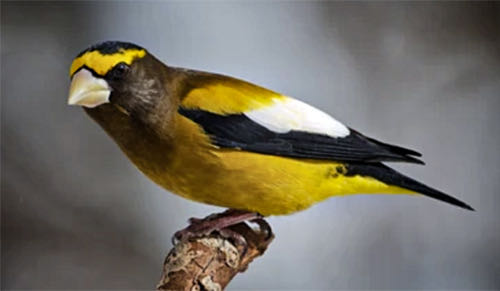
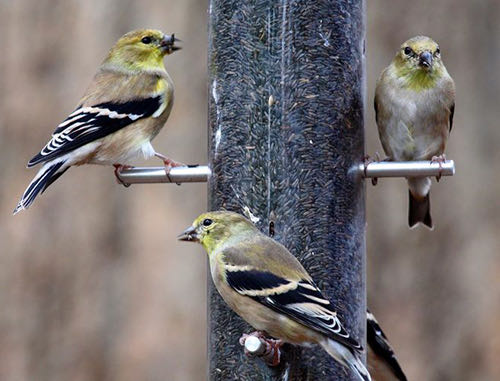
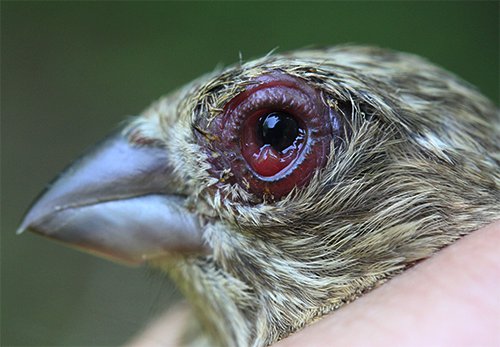
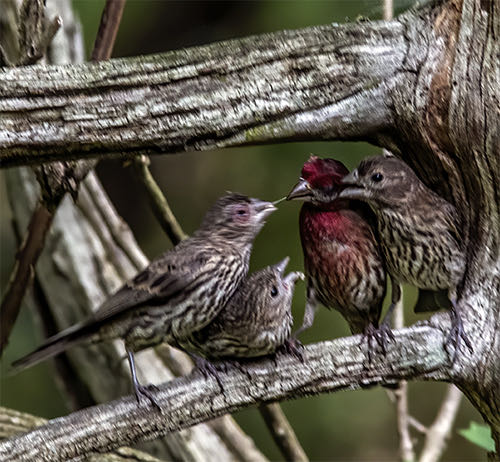
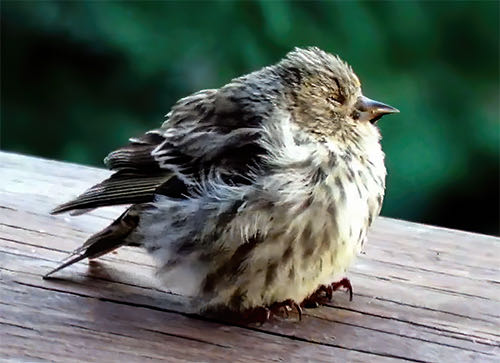
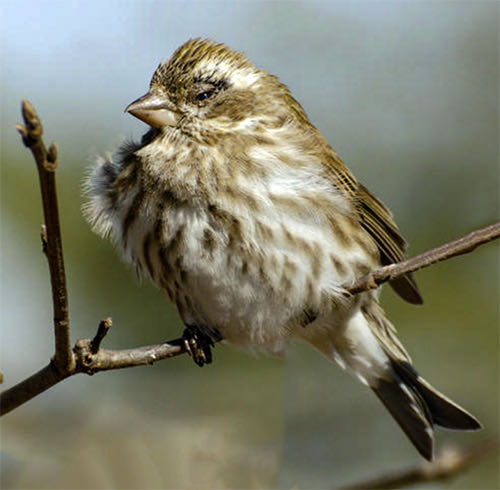
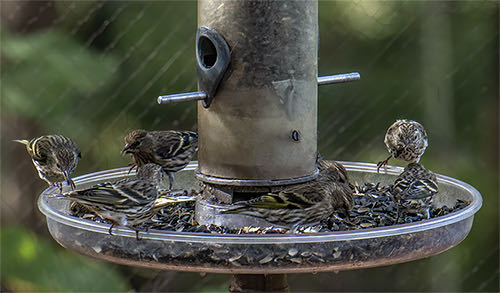

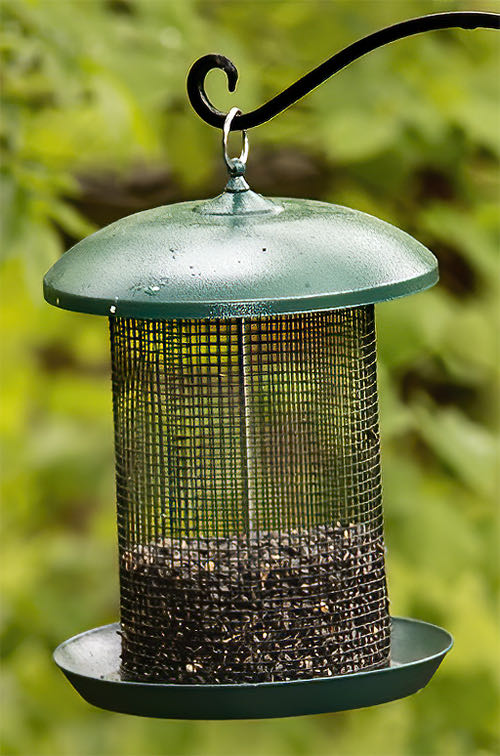
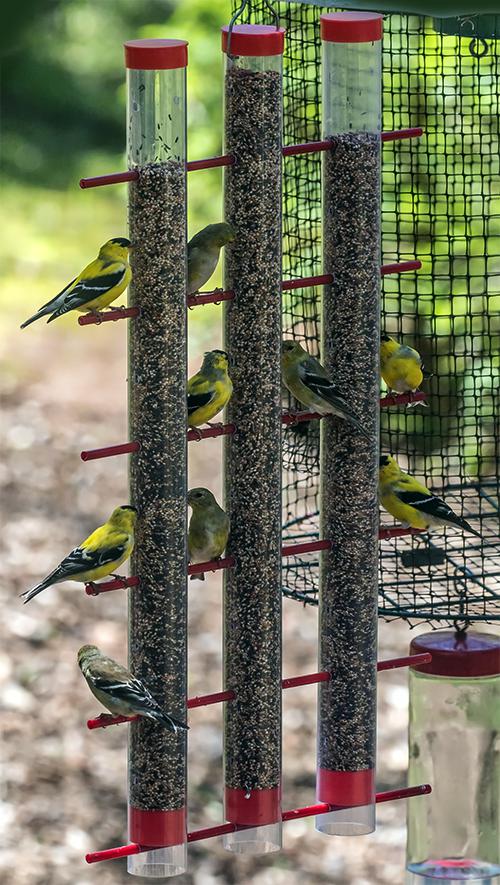
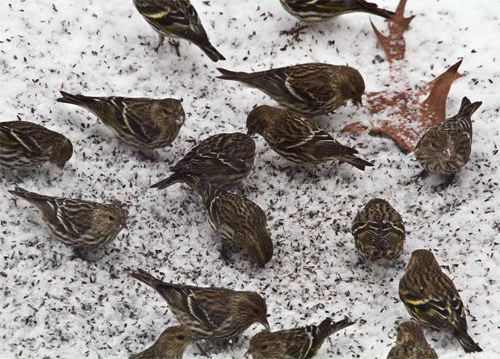
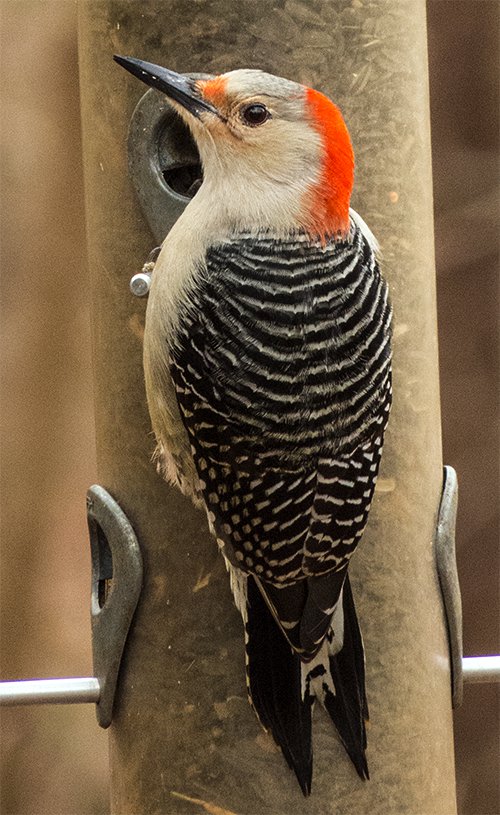
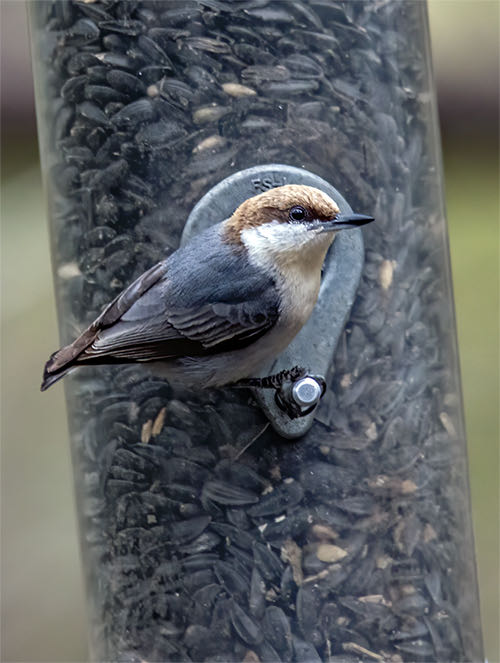











 Please report your spring, summer &
Please report your spring, summer &